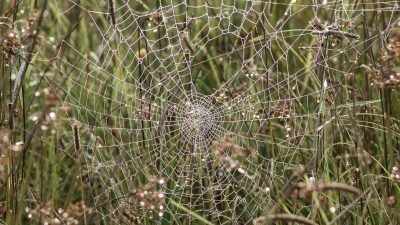
What’s the best way to measure a museum’s success? And by “best,” I mean meaningful and sustainable. “Meaningful” in the form of metrics that will make a community feel it has been well served by the museum and demonstrate to funders and legislators that their support has made a difference in the world. “Sustainable” in the sense that these measures don’t have toxic side effects, especially if, as is usually the case, success requires the measure to rise up, up, up over time.
Many of the traditional metrics of museum performance fail both these tests. Growing attendance means more people are exposed to what your museum has to offer—but what is the quality of that experience? How does it change what they know, think, and feel, either in that moment or months or years later? At what point do more visitors begin to have a negative impact, overall? When do collections begin to exceed the ability of the museum to appropriately house and care for them, much less make them accessible in a meaningful way? How often do museums expand because major donors are willing to pay for new buildings, not because there is a documented need for the space? We, as a sector, need to value and measure other, better things.
Now your organization can apply to join a cohort of thirty museums exploring ways to implement one set of more meaningful and sustainable metrics of success. Led by AAM and funded by the Institute of Museum and Library Services, Museum Social Impact in Practice (MSIIP) is on a three-year mission to help museums measure and report on the beneficial effects they have on health and wellbeing, education and engagement, social connection, and awareness of diverse cultures and ways of life.
Participating museums will receive training on how to use a museum social impact toolkit that provides best practices, assignments, language guides, materials and tips for success; participate in focus groups and meetings around application of the tools; and participate in formative and summative evaluation of their work.
In addition to developing your own system for measuring and reporting on meaningful, sustainable metrics of success, by participating in this project your museum will help improve the toolkit, form the nucleus of a community of practice around metrics of social impact, help compile data, and inform development of new resources museums can use in advocacy efforts.
Read more about the project and decide whether this might be a good fit for your organization. But act fast—applications are due by one minute to midnight on Monday, July 15. Make sure you leave ample time to fill out the application have your CEO/director write a letter of support. If you have questions about the project and the application process, contact my colleague Megan Lantz, Director of Social Impact, at mlantz (at) aam-us.org
If this project isn’t a great fit for your organization, for whatever reason, you can still advance the discussion of better metrics of success inside your organization.
- Download the free Museums and Social Impact Toolkit and explore how you can integrate it into your work.
- Use TrendsWatch: Museums as Community Infrastructure to support discussions around how museums can contribute to education, support for our elders, mental health, and emergency response, as well as a general discussion of sustainable measures of success.
- Take a deep dive into happiness as one meaningful metric that has been integrated into the work of some museums, through experiences for the public and through internal happiness audits.
As a culture and a country, too many of our current measures of attainment hinge on growth: Gross Domestic Product, net worth, revenue, units sold. Over the past two hundred years this growth has raised the standard of living across the globe (even if those benefits are unequally distributed). But the byproducts of that growth—waste, pollution, exhaustion of scarce resources—make these metrics unsustainable in the long term. If we are to create a sustainable future, we need to find better measures of success for all of our endeavors, including museums.
Yours from the future,
Elizabeth
Elizabeth Merritt, VP Strategic Foresight and Founding Director, Center for the Future of Museums
Skip over related stories to continue reading article




I appreciate national projects like MSIIP that are systematizing the measurement of museums’ social impacts and I believe individual museums should be examining the unique role they play in their communities. Each museum should consider defining and measuring its own social impact. For the Oakland Museum of California, we are striving to foster social cohesion. We are measuring how our organization, as a whole, and how individual exhibitions and programs contribute to our social impact. We measure social cohesion in a variety of ways and it is ongoing and iterative work. By focusing on specifics, we are able to use our social impact measurement work to improve our practice as well as demonstrate our value to the community.